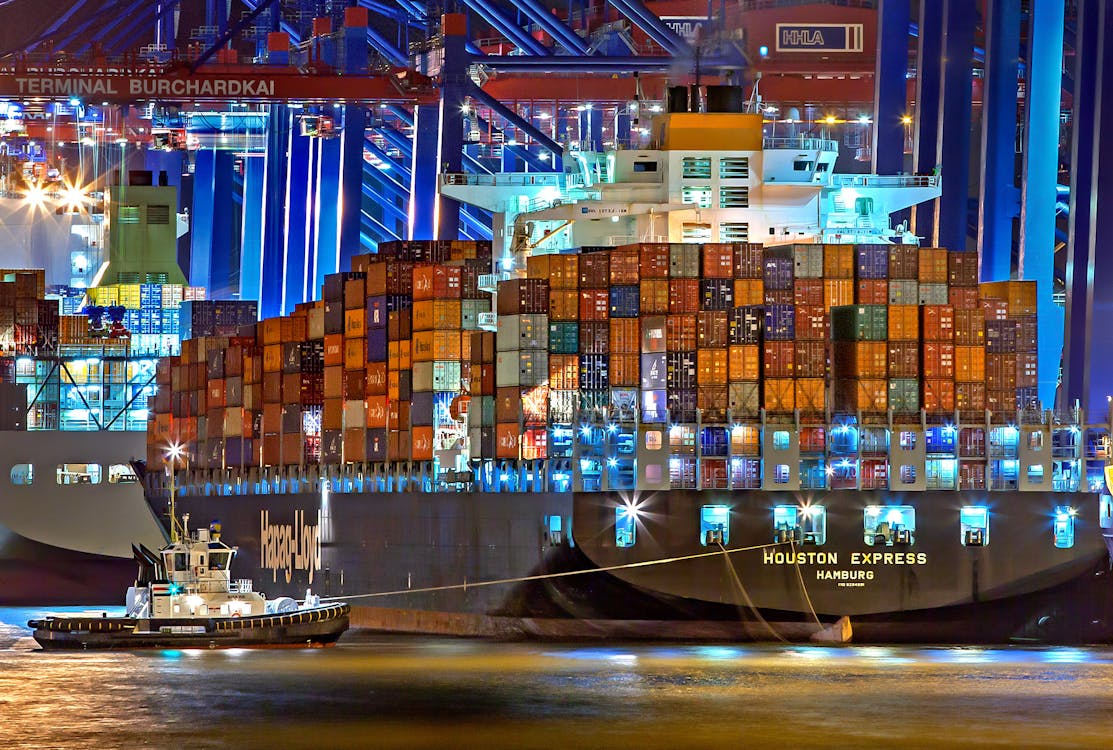Tariff Information Label: The Complete Guide for Importers and Exporters in 2025
A comprehensive guide to understanding and implementing tariff information labels for streamlined customs clearance, compliance, and cost management in global trade.

Tariff information labels have become essential for efficient international trade operations. Photo: TariffGlossary.com
Introduction
The tariff information label has become an essential component in the increasingly complex world of international trade. As businesses navigate global markets, understanding the tariff information label system is crucial for compliance, cost management, and strategic planning. This comprehensive guide explores everything you need to know about tariff information labels – from their fundamental purpose and regulatory requirements to practical applications and future developments.
Whether you're an experienced importer, a manufacturer exploring new export markets, or a trade compliance professional, mastering the intricacies of the tariff information label will help you navigate customs procedures more efficiently and avoid costly mistakes.
What Is a Tariff Information Label?
A tariff information label is a standardized document that provides critical customs and regulatory information about imported goods. This label serves as a transparent communication tool between importers, customs authorities, and other supply chain participants by clearly displaying key information, including:
- Harmonized System (HS) code classification
- Country of origin
- Applicable duty rates
- Preferential treatment eligibility
- Regulatory compliance status
- Import restrictions or conditions
The primary purpose of the tariff information label is to streamline customs clearance by ensuring all relevant tariff and regulatory information is readily available in a standardized format. This transparency helps prevent delays, reduces compliance risks, and facilitates more predictable trade flows.
The Evolution of Tariff Information Labels
The concept of the tariff information label has evolved significantly over time:
Early Documentation Systems
Before standardized tariff information labels, importers relied on a patchwork of customs documentation that varied widely between countries. This inconsistency created significant compliance challenges and frequently led to clearance delays.
Standardization Initiatives
The movement toward standardized tariff information labels gained momentum in the early 2000s as trade facilitation became a priority for major economies. International organizations like the World Customs Organization (WCO) promoted harmonized approaches to tariff information disclosure.
Digital Transformation
Today's tariff information label systems increasingly leverage digital technologies, with many countries moving toward electronic submission requirements and machine-readable formats. This digital evolution has enhanced both efficiency and data accuracy while enabling more sophisticated risk management by customs authorities.
"Properly implemented tariff information label systems can reduce customs clearance times by up to 40% and significantly decrease compliance-related penalties for businesses."
— World Customs Organization, 2024 Trade Facilitation ReportKey Components of a Tariff Information Label
A comprehensive tariff information label typically includes the following essential elements:
Anatomy of a Tariff Information Label
Product Identification
- Detailed product description
- Manufacturer information
- Model and serial numbers
- Product specifications
Classification Information
- Harmonized System (HS) code
- Statistical codes (if required)
- Product-specific classification notes
- Classification rulings references
Origin Information
- Country of manufacture
- Production methods relevant to origin
- Regional content percentages
- References to certificates of origin
Duty and Tax Information
- NTR/MFN duty rates
- Preferential duty rates and program codes
- Anti-dumping or countervailing duties
- Special taxes or fees
Complete tariff information labels provide all the necessary data for customs officials to process import shipments efficiently and ensure compliance with all applicable regulations.
Regulatory Compliance
- Import license requirements
- Technical standards certification
- Sanitary and phytosanitary compliance
- Intellectual property protection status
Administrative Details
- Importer of record
- Customs broker reference
- Entry type
- Date of label creation and validity period
Key Facts: Tariff Information Labels
- Standardized tariff information labels can reduce customs processing times by 25-40%
- Classification errors account for 65% of customs compliance penalties
- Digital tariff information systems are now used by 78% of major importers
- Proper tariff information can identify duty savings averaging 2-4% of landed cost
Regulatory Compliance
- Import license requirements
- Technical standards certification
- Sanitary and phytosanitary compliance
- Intellectual property protection status
Administrative Details
- Importer of record
- Customs broker reference
- Entry type
- Date of label creation and validity period
Regulatory Requirements for Tariff Information Labels
Requirements for tariff information labels vary by jurisdiction, but several common elements exist across major trading nations:
United States
Under U.S. Customs and Border Protection (CBP) guidelines, tariff information labels must:
- Clearly indicate the Harmonized Tariff Schedule of the United States (HTSUS) classification
- Specify the country of origin in accordance with marking requirements
- Disclose any preferential program claims
- Include any applicable Section 301 tariffs or other special duties
European Union
The EU's requirements for tariff information label information include:
- Combined Nomenclature (CN) code
- TARIC additional codes for specific measures
- Country of origin according to non-preferential rules
- Preferential origin claims with appropriate legal basis
- VAT and excise tax implications
Benefits of Proper Tariff Information Labels
Implementing comprehensive tariff information labels offers numerous advantages for key stakeholders in the international trade ecosystem:
Stakeholder Benefits: ROI of Tariff Information Labels
Importers
Exporters
Customs Brokers
Cost Savings
Importers
Exporters
Customs Brokers
Efficiency Gains
Importers
Exporters
Customs Brokers
Risk Reduction
Importers
Exporters
Customs Brokers
Strategic Value
Importers
Exporters
Customs Brokers
Source: 2025 Trade Facilitation Survey of 500+ international traders
Additional Benefits
For Importers
- Reduced customs clearance times
- Lower risk of costly reclassification
- Better audit documentation
For Exporters
- More transparent customer communication
- Enhanced market access through compliance
- Support for FTA claims
Common Challenges with Tariff Information Labels
Despite their benefits, tariff information labels present several challenges that businesses must overcome:
Challenges & Strategic Solutions
Classification Complexity
With over 10,000 possible tariff codes and complex classification rules, even experienced professionals struggle to consistently determine the correct classification.
Strategic Solution
- Implement AI-powered classification tools that can suggest appropriate codes
- Obtain binding rulings for high-volume or complex products
- Develop a classification database with detailed rationales
Origin Determination
Products with multi-country manufacturing processes face complex origin rules that vary by jurisdiction and preferential program, making determinations difficult.
Strategic Solution
- Create origin determination decision trees for each product family
- Implement digital supply chain tracking for materials
- Document supplier certifications and manufacturing processes
Keeping Labels Current
Maintaining up-to-date tariff information labels requires continuous monitoring of tariff code changes, duty rate modifications, new trade remedy measures, and evolving regulations.
Strategic Solution
- Subscribe to automated regulatory change monitoring services
- Implement quarterly review procedures with automated reminders
- Utilize version control systems for label management
Pro tip: Many companies are now outsourcing tariff information label management to specialized service providers who maintain updated databases of global classification and origin rules, allowing businesses to focus on their core operations.
Best Practices for Tariff Information Label Management
Implementing these best practices can enhance your tariff information label processes:
Centralized Classification Database
Maintain a central repository of harmonized system classifications and supporting rationales for all products. This database should serve as the single source of truth for tariff information label creation.
Regular Compliance Reviews
Schedule periodic reviews of tariff information labels to ensure continued accuracy as products, regulations, and tariff schedules evolve. Many companies find quarterly reviews sufficient for most product categories.
Technology Integration
Leverage automated systems that can:
- Generate tariff information labels from product master data
- Update labels when tariff or regulatory changes occur
- Track label versions and update history
- Enable electronic transmission to supply chain partners
The Future of Tariff Information Labels
Several trends are shaping the evolution of tariff information labels:
Technology Transforming Tariff Information Labels
Blockchain Technology
- 1
Immutable Records of classification decisions prevent tampering
- 2
Secure Sharing of label information across supply chains
- 3
Automatic Verification of preferential origin claims
- 4
Enhanced Traceability for regulatory compliance
AI Integration
- 1
Automated Classification of products with 95% accuracy
- 2
Predictive Analytics for compliance risk assessment
- 3
Natural Language Processing for regulatory monitoring
- 4
Machine Learning for complex origin determination
Practical Guide to Creating Tariff Information Labels
Follow these steps to develop effective tariff information labels:
7-Step Tariff Information Label Process
Gather Product Info
- Composition details
- Manufacturing processes
- Technical specifications
- Usage information
Determine Classification
- Apply GRI rules
- Check chapter notes
- Review rulings
- Identify HS code
Establish Origin
- Apply origin rules
- Check FTA requirements
- Calculate regional value
- Document processes
Calculate Duties
- MFN rates
- Preferential rates
- Special duties
Review Regulations
- Import licenses
- Technical standards
- SPS measures
Create Label
- Follow format requirements
- Include all data points
- Ensure accuracy
Verify & Update
- Second review
- Broker validation
- Track changes
Critical tip: Document all classification decisions and origin determinations in detail. This documentation becomes invaluable during customs audits or classification disputes.
Conclusion
The tariff information label has evolved from a simple customs document into a sophisticated tool for navigating the complexities of international trade. As global commerce becomes increasingly regulated and scrutinized, the value of accurate and comprehensive tariff information labels continues to grow.
By investing in robust tariff information label systems and processes, businesses can reduce compliance risks, optimize duty payments, accelerate customs clearance, and gain valuable competitive advantages. While creating and maintaining these labels requires significant expertise and resources, the return on investment through smoother trade operations and cost savings makes this effort worthwhile for companies of all sizes.
As technological advances continue to transform trade documentation, the future of the tariff information label promises even greater integration with global supply chains and regulatory systems. Forward-thinking businesses will leverage these advancements to create ever more efficient and effective trade compliance programs.
Frequently Asked Questions About Tariff Information Labels
Are tariff information labels legally required?
While specific tariff information label formats are not universally mandated, the information they contain is generally required for customs clearance in most jurisdictions. Many countries have implemented standardized documentation requirements that effectively necessitate some form of structured tariff information disclosure.
How often should tariff information labels be updated?
Tariff information labels should be reviewed and potentially updated whenever product specifications change, manufacturing locations or processes are modified, tariff schedules are updated (typically annually), new trade agreements enter into force, trade remedy measures are implemented, or regulatory requirements evolve. For most companies, a quarterly review process is recommended at minimum.
Can third-party providers help with tariff information labels?
Yes, numerous service providers specialize in tariff information label creation and management. These range from customs brokers offering basic classification services to comprehensive trade management solutions that integrate with enterprise systems. For companies lacking internal expertise, these providers can significantly improve compliance while reducing costs.
For more information on customs documentation and compliance, explore our HTS Code Lookup tool and our glossary entry on the Harmonized System.
Related Articles

Non-Tariff Barriers: The Complete Guide for International Trade in 2025

U.S. Announces New Tariffs on $300 Billion of Chinese Goods
Stay Informed on Trade Documentation Requirements
Get the latest updates on tariff information labels, customs documentation requirements, and trade compliance best practices delivered directly to your inbox.
Subscribe to Our Newsletter